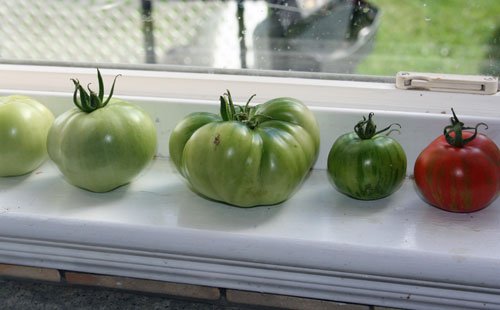Frugal Living with Food Sensitivities

Written by Kate Tietje, Contributing Writer
One major area that women attempt to be frugal is in the kitchen. I know I do; it’s probably “my” main area! (In others my husband and I work together.) But when you have food sensitivities or have to be on a special diet, sometimes being frugal in the kitchen isn’t so easy. However, it is possible! We’ve recently lowered our grocery budget quite a bit, despite attempting to be low-grain, so I have some experience in food limitations and frugal budgets!
Frugal Principles
The same frugal principles apply when eating with food sensitivities as without: meal plan, make a careful grocery list, use cash, and use frugal ingredients. It’s just that which ingredients you use may change a little bit, possibly (slightly) increasing your budget.
For example…I keep my grocery budget by trying to stick to the following ingredients a lot:
- Potatoes
- Celery
- Carrots
- Peas
- Broccoli
- Bananas
- Stock
- Squash (usually spaghetti squash because we’re not huge fans)
- Whole chickens
- Ground beef
- Dry beans
Most of these are possible on both dairy and grain-free diets (with the exception of GAPS; potatoes and most beans aren’t allowed on GAPS). I choose these foods because they are very cheap per pound, I can use them in many different dishes and my family likes them. They can be stretched pretty far, too. In my most recent cookbook, Against the Grain, I have a recipe for Italian Chili which uses stock, beans, and ground beef — pretty frugal!
I also end up skipping a lot of ingredients that are not-so-frugal: boneless, skinless chicken breasts; steak (except that right now we have a whole cow in our freezer so steak’s not anymore expensive than ground beef); most seafood (I incorporate shrimp, sole, and whatever I can find wild-caught and cheap from time to time); out-of-season veggies; most raw cheese (I can find a couple of our favorite varieties at reasonable prices, but “fancy” cheeses are out); etc.
No packaged foods, ever. This is a huge rule. I do not buy nuts, dried fruits (in snack/small packages; I might buy raisins if my kids tolerated them, but not others), crackers, drinks, cereals, etc. It doesn’t matter if they’re organic or healthy or anything else: I can’t afford the $4 – $10/lb. that these foods cost when I could make them at home much more cheaply (and probably healthier too).
Creating meals that use ingredients that are similar helps, too. If I have to buy 4 – 5 ingredients just for one meal, it’s probably not going on the plan. But if I am already buying almost everything I need and only need one additional ingredient, it probably can go on the plan.
Meals which are frugal change depending on what’s on hand. If I’ve just bought a package of ham slices, suddenly ham and scalloped potatoes or ham and bean soup are pretty frugal. If I don’t have the ham, they’re really not. Pizza’s frugal if I have extra milk on hand to make cheese, plenty of flour to make dough, sauce in the pantry, and sausage in the freezer. If I don’t have all or most of these, it’s not so frugal anymore. (Despite it being a family favorite, I had to delete pizza from our current meal plan for this reason.)

Image by semarr
Frugal Substitutes
A lot of people like to rely on pasta and grains to keep costs down. But the truth is, there are substitutes that can be just as frugal.
I bake a lot with almond flour, which is more expensive (almond meal at Trader Joe’s is $4/lb., while I can get wheat berries for just $0.89/lb.), but it has so much more protein and fat that we don’t need as much of it to fill up. I haven’t found a cheaper price anywhere, not even online.
Spaghetti squash is an excellent substitute for pasta and often cheaper than the pasta itself, especially the gluten-free varieties. (My favorite GF pasta is normally around $5/lb.; spaghetti squash I can often get for around $1/lb.)
Coconut milk is a great substitute for dairy. You can make it yourself, which is relatively frugal; but when I tried it, it wasn’t worth the effort for the amount of money it saved me (not a ton). There are often coupons available for the So Delicious brand, so this is a great way to save money on milk.
The best deal I’ve found on coconut oil is buying Nutiva through Amazon’s Subscribe & Save program. I got 2 54-oz. jars for around $38 (shipping is free).
We found almond butter for $5 for a 16-oz. jar at Trader Joe’s today (one of the cheapest prices we’ve found; you can check online too though). My kids can’t eat peanuts, but they love peanut butter. This is “special peanut butter” for them. Their prices on sunflower butter for those with other nut allergies is also quite reasonable.
I really like to bake with beans and bean flours, which is an excellent option for those with nut and grain allergies. It’s quite frugal too. I have a recipe for White Bean Vanilla Cake (GAPS-friendly) on my site; an updated version (with a chocolate option) is in Against the Grain.
Get Creative
Sometimes, you have to get creative with what you have. It’s certainly possible to eat a good variety of food, not compromise on quality, and still stick to a budget (on a low-grain diet, we’re managing about $300 per month for a family of 4). You’ll have your priorities, of course; I spend quite a lot on raw milk right now. But beyond that, yes, I use very similar ingredients on a regular basis. Here you can see a couple examples of my meal plans: 4/15 and 4/29.
Some ideas on how to get creative with your meals
If you have a whole chicken, make these meals:
- Roast chicken with veggies
- Creamed chicken (using coconut milk if you have a dairy allergy) over rice (or cauliflower “rice”)
- Chicken veggie soup
- Chicken on green salads
Four totally different meals…all frugal…and all easily adapted to food sensitivities! (I’d so love to serve the creamed chicken here…but I’m the only one who likes it!)
If you have a pound of ground beef:
- Serve meatballs with spaghetti squash
- Make meatball soup with the leftovers
Two easy meals from one pound of meat…and this is all GAPS-friendly too!
The point is, you can have quite a variety in your meals, if you’re willing to use the same ingredient in unique ways. Using interesting spices and flavors (lemon, lime, ginger) is a great way to spice up otherwise “boring” food too.
Sometimes I have to be flexible. If something’s on special, maybe I’ll buy a lot of it and it will feature heavily in our meals for the next couple weeks. Recently, Whole Foods had a deal where you could buy organic strawberries for just $1.99/lb. I bought 10. Once I found organic corn chips (normally $4/bag) for just $1/bag — I bought 8.
But on the other hand, sometimes certain things are more expensive than I thought, and I have to skip them. It took me a few weeks to find enough money for almond butter since it’s more than I thought; and when they raised the price on my favorite cheese, I had to buy a cheaper substitute for awhile (still good cheese, just not my preferred style). My husband might want bacon for breakfast everyday, but when I have to buy it for $6/lb. it’s not happening. Now, after we buy a whole pig in a month or so and I pay just $1.75/lb. for all the cuts, bacon everyday will be fine!
My goal when shopping is to fill my cart with cheap, nutrient-dense foods that my family will and can eat. Celery with almond butter? Awesome.
I’ve also had to get over the whole “meal” concept sometimes. It is not a problem if my kids eat apple slices with almond butter, some raw cheese, and some leftover meat for lunch. Not a typical meal, not something I specially cooked, but they’re happy, full, and the meal is nutritious. Sometimes I simply eat some ground beef with sea salt and a smoothie for breakfast. It does not matter, as long as everyone gets to eat nourishing food.
Don’t forget to check your local farmer’s market for excellent seasonal deals, too. I’m search of awesome, local raw honey and maple syrup, as well as fresh spring greens (we go through a lot of lettuce at our house!).
As a final note, you can see how I’ve super-charged my grocery budget, how I stay well-organized, and how I compare prices for more frugal ideas.







Kate – thanks for your post – so helpful!
We found some almost-local raw honey (a friend picks it up for us when she visits her family a few hours from here) – I paid $7 and some change for a 16-oz jar (I think) – which is certainly the best price I’ve found. Are you near Michigan?
@Amanda Z, Well, I’m in Ohio, so kind of! My farmer (who is in NW Ohio, maybe an hour from the MI border) will have raw honey in a couple months. His brother raises the bees. I think last year I paid $4 for 2 lbs. of it? Or something else ridiculously cheap. Right now I can’t find it that cheap, but I’m learning honey is seasonal and they just don’t have much yet. They will in a few weeks though! As well as cool different “flavors.”
This is something I aim for…but I definitely still rely on crackers, snacks and cereals. I can’t imagine having to come up with substitutes having three young kids on top of everything else. How in the world do you do it? I guess it’s all about what works for your family and what the priorities are. It’s important for me to have stuff that my husband can feed to the kids if I am ever not here (I work a few mornings a week and like to meet up with friends to run when I can). I wish I could say I had all this stuff frozen and made in advance but I’m so not there.
Really though, one lb of ground beef would be for TWO meals? That’s one for us! Last night I made pork sirloins – it came with about 5 of them in the package and then roasted cauliflower and a large salad on the side. We were full….until evening hit and then my husband raided the pantry!
And we also have a dairy and nut allergy in the house so it’s sunflower butter (found it at Target on clearance for like $1 last time!), coconut and soy milk and homemade rolls, pizza dough, granola bars and other snacks. Ideally I’d love to add in something new every week to “homemake” but I don’t even know where to start. Thoughts to help me out?
@Val, I can only get away with 1 lb. of beef in two meals if it’s not the “main” part. If I use it with spaghetti squash or in soup it works out. If it’s burgers…1 lb. won’t even last 1 meal now!
Can you bake with beans or bean flours? We have done that. The white bean cake, made as cupcakes/muffins is a popular snack here. Smoothies, frozen fruit, various veggies (w/almond butter for us). My kids liked banana pancakes for awhile (grain-free). Jerky?
BTW, don’t buy sauce for the spaghetti/pizza! It’s sooo much better and cheaper homemade. One can of tomato paste + 2 cans of water added to sauteed garlic (and other veggies if you want) along with oregano, basil, parsely, salt and a bit of honey (takes the canned taste away). 🙂
Great post. We are GFCF as well as nut- and egg-free, so grocery shopping is my largest household expense by FAR. Looking forward to getting my own cow share this week and that will help with meat for awhile. I also make my own cocounut milk when I have time, but feel as you do that it is often not worth the effort. I buy a lot of my GF flours, maple syrup, and (occasionally) snacks on Amazon’s Subscribe and Save, which also helps. Thanks for the tips!
@Yvette, Check farmer’s markets now for maple syrup. My CHEAPEST price locally was $56/gal (for grade A), but I found a whole gallon for $50 (grade B). I know you can’t get it that cheaply on Amazon, I’ve looked!
Since I’ve been on GAPS I’ve been buying honey by the gallon. I get a gallon of local (literally next town over) raw honey for $45. Definitely the best I’ve seen anywhere and it’s local and raw. Nixing processed and exotic foods has definitely saved us a bunch of money – which of course wound up going towards grassfed meat, Kerry Gold butter and such. I’ve been buying more local and in season and freezing for later. Costco has some good deals as well. Great article!!
Great information. I’m just coming to realize my food insensitivities so I really appreciated this article and I’m also trying to be as frugal as possible.
Costco sells organic marathana Almond Butter for $6 and change for a 26 oz jar. This is the cheapest I’ve found. We pick up some for friends when we go. It’s an easy thing for friends to pick up for you and pay them back. Not too expensive or too big!
These are great ideas and some things that we do. However, I also do sometimes splurge a bit since otherwise my family (mainly my husband) starts to get a bit upset after a few weeks. How I do this is that I rotate in one of his favourites (more costly) in with mainly the frugal meals. So say I do 5/7 meals more the way you do and then 1 or 2 more costly but not through the roof, making sure I do get as good deals as possible, but also realizing that its not always possible to be super frugal and honoring my husband is also important. Its not quite as frugal but not as costly as doing that all the time. Its a good compromise. I find that if I do not do that, he ends up buying other junk while out that is way worse than what I can make here. Everyone’s family is different. I figure sometimes that I pay less on one thing so that gives me room to splurge a bit on something else like nuts or organic raisins for treats. Treats help us not feel so deprived and done in this way I think I can still call them frugal too.
I think I hear this a bit in your post but wanted to just add how we do things too. 🙂
@Nola, I think it’s important to splurge once in a while and make things that our family (especially our husbands) really like. The times when I make bigger splurges in my grocery budget, it’s usually on something that Ryan really enjoys. One of his requests is that we have really nice steaks once in a while. If I stay frugal with most other things, it’s not that hard to fit in the odd expensive item.
@Nola, I agree. 🙂 And as I’ve done this system for a longer time, I’ve found I have a bit more “wiggle room” in my budget, so I might have enough for a treat. I baked some brownies for us last night with almond flour (super yummy). And my husband requests ice cream every night (we use only a very small amount of maple syrup in it, so it’s not a ton of sugar). I could buy less milk, but…he wants it, we love it, there it is (and it’s healthy!).
thank you for this timely post. Right now, I am struggling with grocery bills. My son was just put on a wheat free, peanut free, dairy free, and chocolate free diet. It’s been a challenge!
I read that you use spaghetti squash. Have you ever boiled it till it is soft then take a fork to it to make it spaghetti like. Then top with spaghetti sauce. It tastes just like spaghetti and my kids (7, 5, 2) eat it without complaints!
@Ceci, That’s how we serve spaghetti squash as well. My husband likes it almost better than pasta!
@Stephanie @ Keeper of the Home,
No way! You boil the whole thing, skin on? Elaborate. I have only stuck it in the oven or the micro but it still always has a crunch (which I love, I could devour the entire thing) that the kids do not appreciate much.
@Val, You know what’s funny, is that I didn’t even register that the first commenter said that she boils hers. I must have skipped that word and just focused on the part about she makes it spaghetti like to eat instead of pasta. I must need some sleep… 🙂
So no, I don’t boil it. I cut mine in half, put it upside down on a cookie sheet, and bake it for about an hour at 350F. Then I let it cool slightly and use a fork to loosen the “spaghetti” strands and serve it as pasta. It always gets nice and soft for me this way.
@Val, I do the same thing Stephanie does, except I add some water to the pan I’m baking it in. It gets soft and my kids seem to like it (and my husband and I are adjusting!).
I noticed your note about purchasing a whole pig. We were just contacted regarding the types of cuts we would like for the 1/2 pig we have decided to purchase. However, this is a totally new thing for us and I have no idea where to find out what kind of cuts we want! Do you have any tips? Any suggestions as to which cuts to avoid and simply have ground? Anythine else we should know as we embark on this new ‘adventure’? :o) Thanks so much!!
@katherine, Depends on what you like. “Fresh side” is good if you want the ‘bacon’ but don’t want nitrates (some butchers won’t prepare bacon any other way). Then there’s ham, roasts (you can have some of these ground if you don’t want too many roasts; depends on how you prefer to cook it), pork chops, and sausage. We had our sausage prepared with salt, pepper, and sage, though we had the option for plain. Does your butcher have a website? Sometimes they have a picture of the cuts you can get. In my experience they will ask you questions and offer you limited options, because it is dependent on the pig itself how much of what is available! Pigs have the most versatile “cuts” of any animal I have ordered.
I was confused when you said your budget is $300 for a family of 4 until I saw that your kids are little. We are a family of 4 and we spend twice that. I am always looking for ways to feed us on the cheap. I have started making my own almond flour because almonds are cheaper than the flour and I like that I can soak and dehydrate them first which makes them easier to digest. I made chicken tenders with half of a breast I had saved from the last whole chicken for three of us tonight by breading it with egg and almond flour and it was the best ever. Anyway, I just wanted to add that if you live in their range, azurestandard.com is a great resource for natural and gf foods. Also, I get my coconut oil from rosemountainherbs.com or wildernessfamilynaturals.com for like $50 a gallon. Thanks for some more great ideas to add to what we do.
@Mary Korte, Yes, my kids are a little, but I think we eat a LOT. 🙂 It can also depend on the area where you live. I am near Amish country and a lot of farms so that seems to help keep my costs down. Exploring non-traditional food options helps a lot too! Some friends and I are planning to go to Amish country in a few weeks to see what we can find (strawberry season).
this is a great post. we try to eat whole foods and healthy foods and the one thing that is our big rule is no packaged foods as well. i do buy raisins and dried cranberries in bulk, but no crackers, cereals, etc… they really eat up a small budget fast (and aren’t usually great for you)! i buy most my bulk stuff from azure standard in 25 lbs increments and, though i can only do few variety at a time, have built up a great whole foods pantry for great per pound prices.
Excellent post, Kate.. You’ve inspired me to do some digging and research and create my own grocery list for my husband’s food sensitivities. He has high uric acid levels and cholesterol, so we need to really monitor his diet, and stick to a budget too. Thank you for sharing this!
You were reading my mind, Staying within a budget and eating healthy (scd) for a family of four (2 adolescent boys) is very trying. I incorporate the things you have listed, yet, $300 a month? That holds us for about 2 weeks, with me stretching the meals as much as possible. In looking at your sample menu, it seemed low in veggies. Is that where your savings come from?
@Tressey, It probably is, a little bit. Certain meals — like taco salad — are pretty veggie-heavy, but a lot aren’t. (I don’t think it’s BAD, we serve veggies at least once a day, and with fruit 3 – 4 times.) We’ll do more as they appear at the farmer’s market and are seasonal and cheap!
I read your sample week menu and tried the vanilla bean cake. Yummy. I made one cake and the rest into cupcakes, plain. Did I say yummy? I’m wondering if you ever froze them for later eating with good results? Also, do you have any cookie or bread recipes that use beans and is scd legal, as almonds tend to make my throat tickle and causes slight sneezing. Thanks in advance and twice thanks for the cake recipe.
I just checked my records for our grocery spending. We haven’t cut costs there, but have greatly reduced out eating out costs simply because we really don’t do it much anymore. We are getting better food though, but I’d love to be able to reduce our costs more-especially since we have our own hens and goats for eggs and milk, and I don’t put their feed into my grocery budget. We live in a small town whose populace doesn’t really care to eat well, so healthy options are limited. Our farmer’s market is NOT cheap, so that isn’t a way to save. We are raising our own steer for grass fed beef (might be able to butcher around Nov, but def by Jan) and are working on a trade with neighbors to give them 2 of our goats for 2 pigs. We’ve been trying to find a new place to live so we have more land for growing feed, but that isn’t happening as fast as we’d like. Thanks for your ideas and I’m going to have to try those cakes!
Oh, and our 5 year old son is sensitive to ALL food chemicals, so we have cut processed foods completely by necessity. Did you know you can make marshmallows at home? Sure, they aren’t “good for you” but how else can you enjoy a s’more in the summer?
I LOVE this post! I have two young boys with multiple food allergies and have a blog on altering food storage for those with allergies. If you don’t mind, I would love to share a link to this post on it!